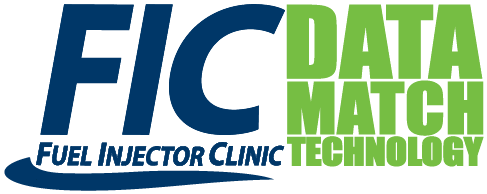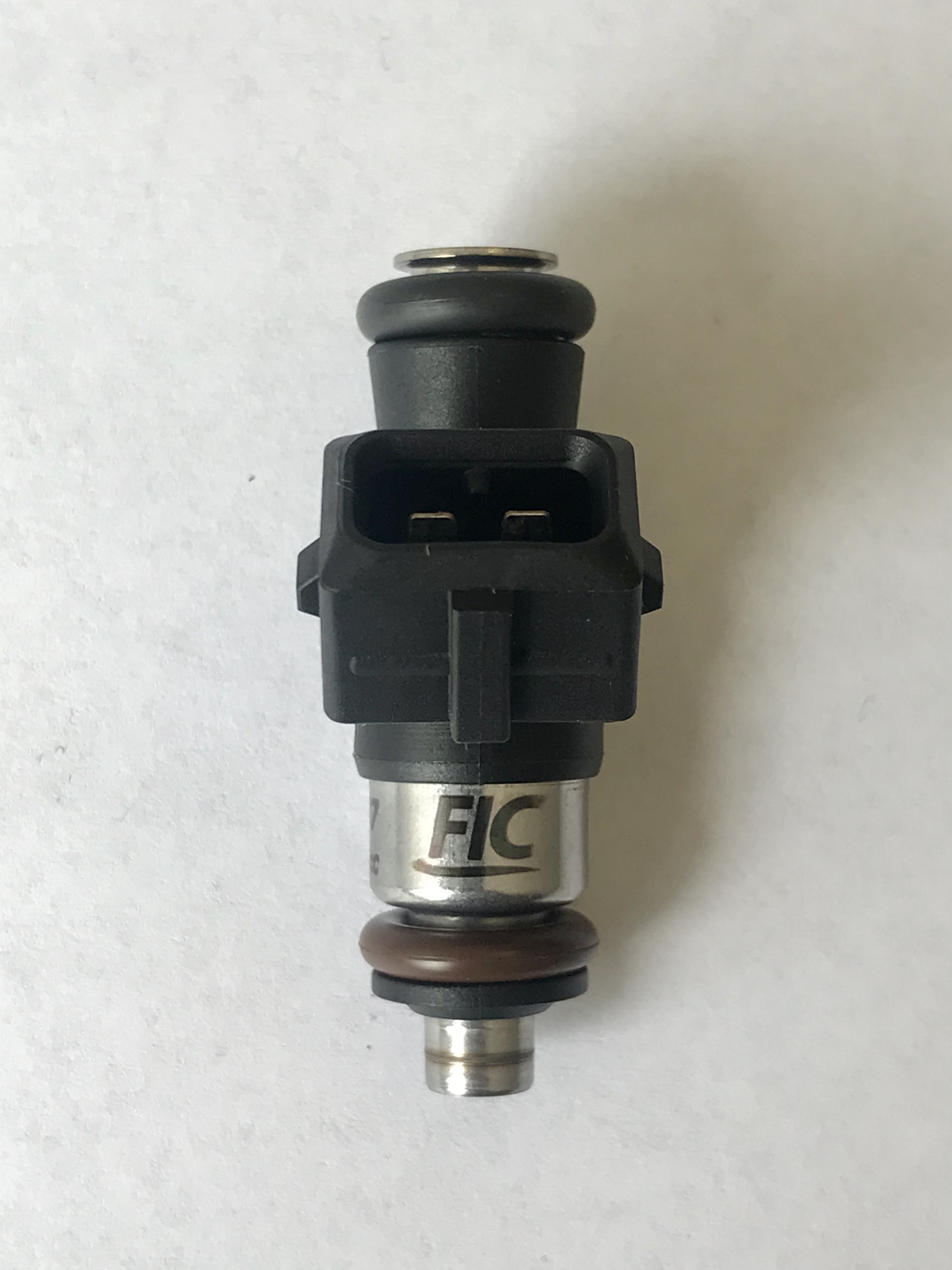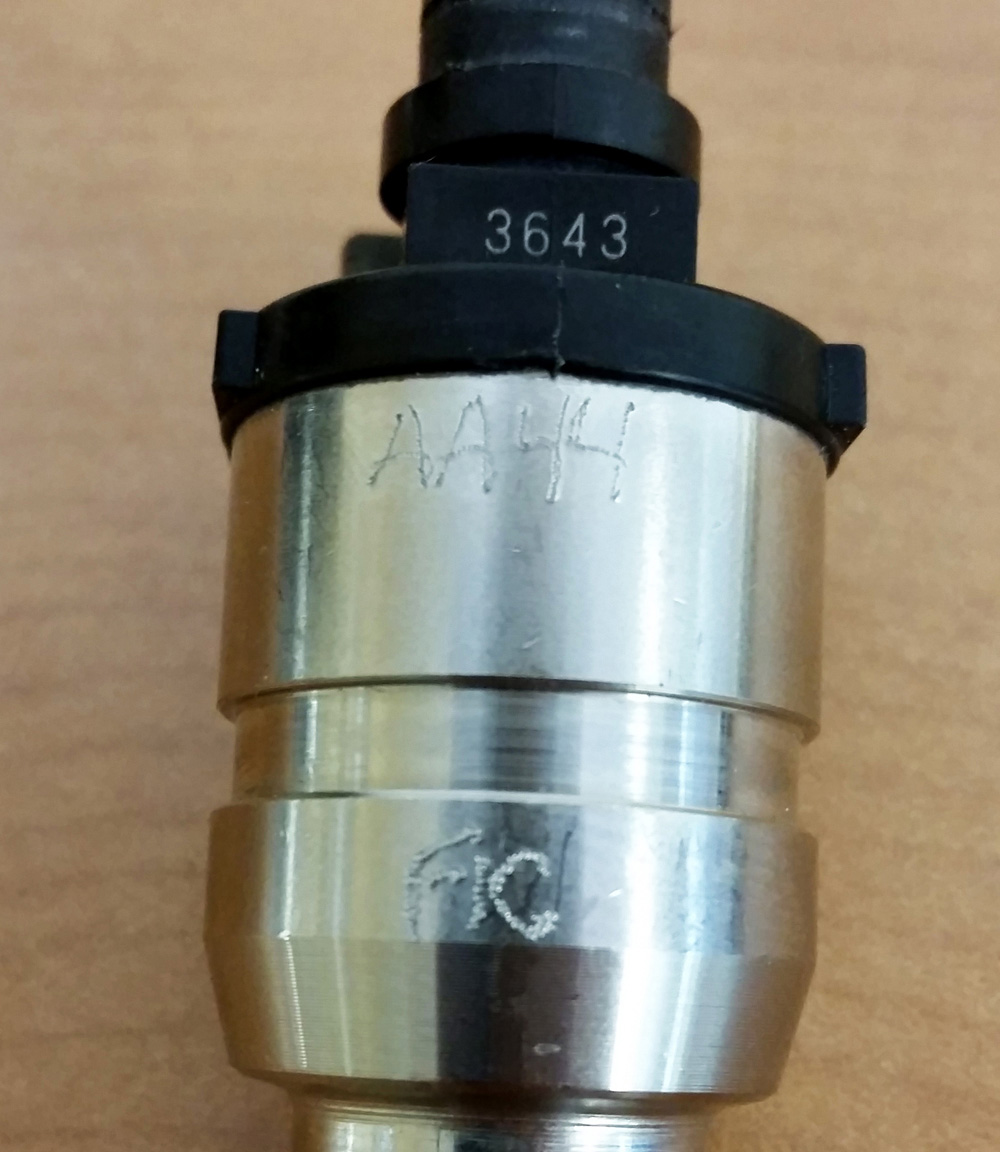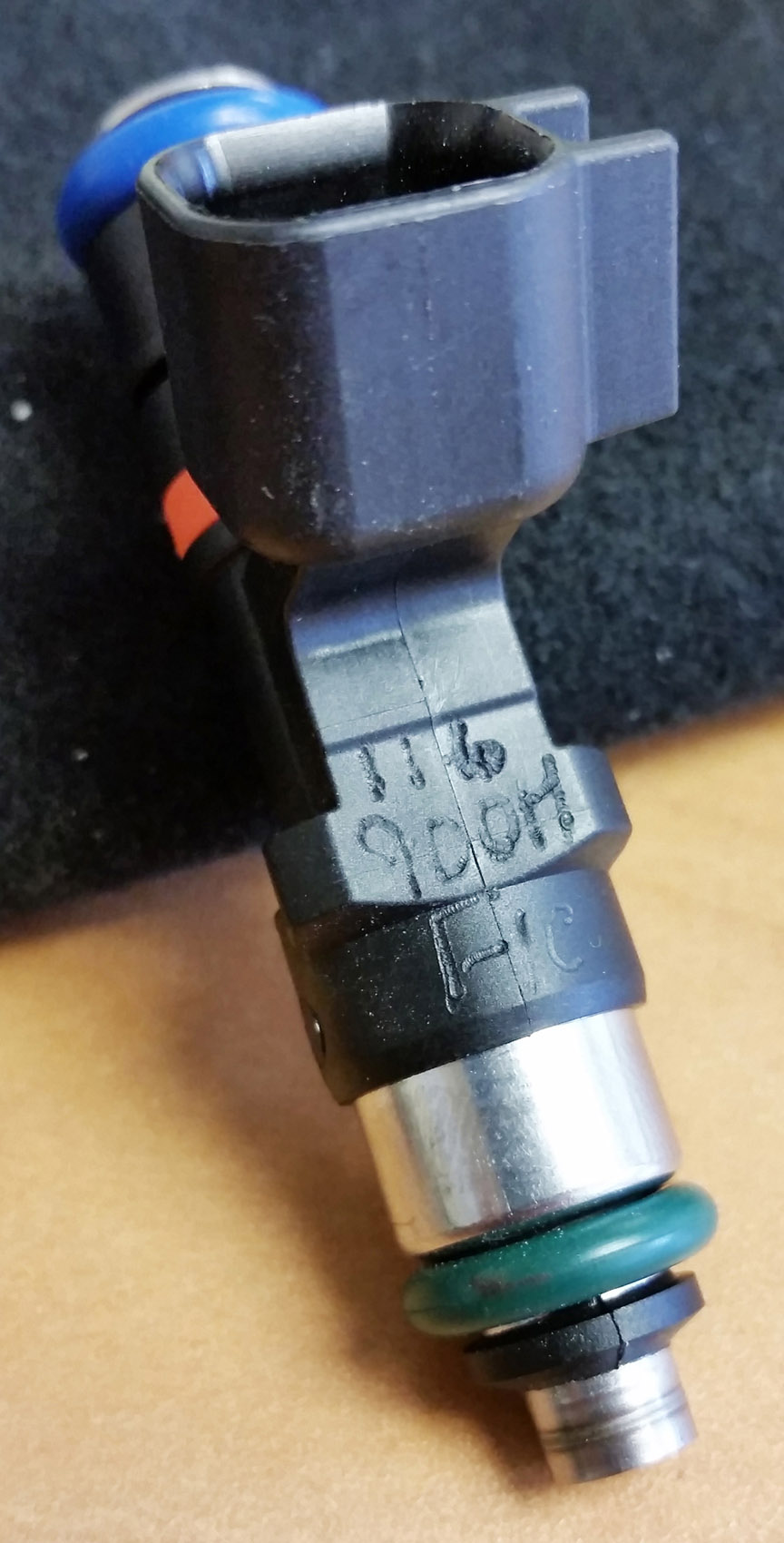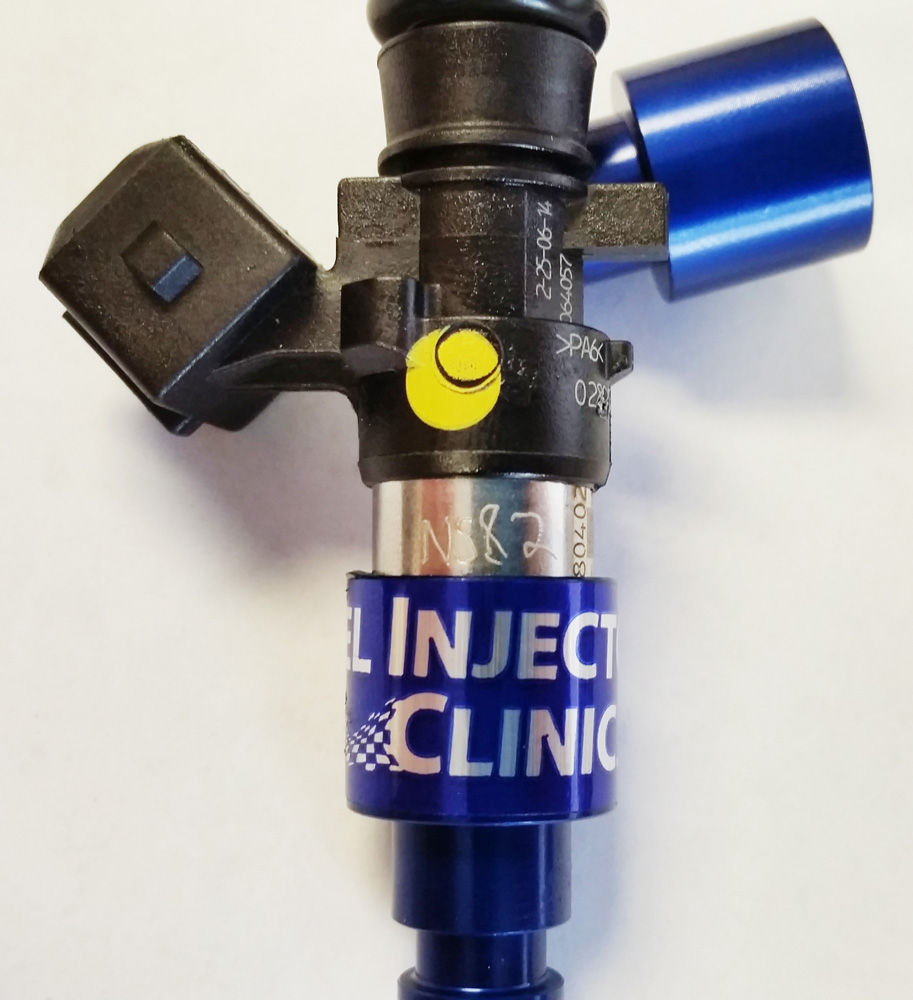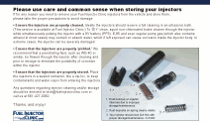Frequently Asked Questions
- How to identify whether your injectors are Fuel Injector Clinic injectors
- What is a peak and hold signal?
- What is a saturated signal?
- How do I know if my injector is low impedance or high impedance?
- Do I need low impedance or high impedance injectors?
- If I have a choice, why would I choose a low-Z or high-Z injector?
- How much flow can I get from low impedance vs. high impedance injectors?
- What are the differences between low impedance/peak & hold and high impedance/saturated injectors?
- Does my ECU create a P&H signal? - Read “Why does my car have a resistor pack?”
- Why do I have a (injector) resistor pack (box) in my car?
- What type of fuel can I use in my injector?
- Can I check whether my injectors are working myself?
- How to take care of your injector when your car is not running regularly
- What is base fuel pressure?
- At what Pressure will my injector fail?
- Pump delivery pressure and the injector?
- Do all cars use the same base fuel pressure?
- At what pressure does FIC flow test/rate their injectors?
- Why do your competitors offer injectors with the right plug for my harness and you don’t?
- Will your injectors plug into my wiring harness?
How to identify whether your injectors are Fuel Injector Clinic injectors
We know many people have bought or are looking into buying our product either used or new. We thought we would put up some info to help our customers identify whether or not they have Fuel Injector Clinic fuel injectors.
The most obvious way to tell that they are Fuel Injector Clinic injectors is to look for one of our stickers or laser engraving on the product. The older stickers (4 years and older) have a silver background. The newer stickers have a dark blue background. Newer injector will feature laser engraving in place of stickers.
Click to enlarge
Click to enlarge
Another way is to look for our initials scribed (FIC) or laser engraved on the injectors. You will find the FIC initials scribed on the side opposite the electrical plug for a low-z injector and on the same side as the electrical plug for a high-z injector. If the injectors you are looking at or have bought do not have the FIC lettering anywhere, it is unlikely that they are Fuel Injector Clinic injectors, unless someone tampered with them, and then you probably wouldn’t want them anyway.
|
Click to enlarge |

Click to enlarge |
Click to enlarge |
|
| Low-Z Injector | High-Z Injector | Laser Engraved Injector | Laser Engraved Injector 2 |
The last way is to look for a Dark Blue adapter. This way will only work for the newer generation of injectors that require adapters to fit in most applications. Again if the adapters are not dark blue but a light blue and do not have a FIC sticker on them, they are not our product.
Click to enlarge
So now that you know whether you have Fuel Injector Clinic injectors or not how do you tell what vehicle they are for and what flow size they are?
95% of our injectors have been marked with a 7 digit identification tag followed by a letter (126-2150H). The first three digits identify what vehicle they are for. So 126 would signify a DSM/Evo 8,9 specific part.
• The next four digits represent the flow size. So 2150 would be 2150cc per minute.
• The letter “H” signifies that it is a high impedance injector.
• You now know that you have Fuel Injector Clinic injectors and you know what size and application they are for.
|
Click to enlarge |
| For example, the above injector shows 116-900H. This indicates this injector is for a Honda K series (116) and is a 900cc high impedance style. |
How do you know if they have our Data Match Technology matching?
If your injectors have Data Match Technology matching they will have an alpha numeric serial number on them (AA00). On high impedance injectors i.e. 2150’s, 1100’s and 900’s you will find this code scribed into the lower stainless steel portion of the injector. You may have to pull off the bottom adapter to see it. On low impedance injectors i.e. 1800’s and 1120’s you will find this on the side of the injector’s body.
|
Click to enlarge |
Click to enlarge |
|
Serial: AA44 Low impedance |
Serial: NS82 High impedance |
The main benefit to Data Match Technology is that your injectors are not only match precisely in flow rate but that they are also match by latency. A added benefit of this is that we keep a database of all the injectors flowed, meaning if you bought a set used and you have the serial numbers, we can reproduce the original data sheet with the slope flows and individual latency data for that set.
Lastly if you are ever in doubt about a set of injectors you can always contact us with a picture and we would be glad to look at it and help you identify that they are Fuel Injector Clinic Injectors.
What is a peak and hold signal?
A peak and hold signal is a complex signal used to operate a low impedance injector. Peak and hold signals have two parts: a high initial current used to quickly open the injector and a low secondary current that is sufficient to hold the injector open until the end of the pulse. The low secondary current allows the injector to close more quickly since it takes less time for the weaker electrical field to collapse. Because of the two-step nature of the signal and the rudimentary construction of fuel injectors in the 1980’s, low impedance injectors of that time were more preferable than high impedance injectors for high-flow high performance applications; they could deliver more fuel more reliably than comparable high impedance injectors.
A saturated signal is a simple signal used to operate high impedance injectors. A single intensity signal is sent to a fuel injector which causes the valve to open and remain open until the signal has ended. The new technology used in the design and construction of today’s high impedance injectors allows much larger flow rates, much better response times, and much more predictable low pulse width operation than previous designs – all without overheating. This means that low impedance injectors are no longer the peak of performance when considering fuel injectors.
How do I know if my injector is low impedance or high impedance?
You can measure the resistance across the two electrical terminals of the injector. If the resistance is between 1.5 and 4.0 Ohm you have low impedance injectors. If the resistance is between 8 and 16 Ohm you have high impedance injectors.
Do I need low impedance or high impedance injectors?
This depends on the driver signal that your ECU delivers to the injector.
If you are using an OEM ECU (even if it is “flashed”), you need to measure the impedance of the OEM injectors and choose injectors that match the impedance category (high-Z or low-Z) of the OEM injectors. This is the simplest way to verify which type of injectors you need in order to make sure you don’t damage your ECU. See [“How do I know if my injector is low impedance or high impedance?”]to determine what injectors you have.
Many aftermarket ECUs are able to drive both low and high impedance injectors. If you have a concern regarding which you should choose you should contact the manufacturer of your ECU or refer to its installation manual to determine the best choice.
If I have a choice, why would I choose a low-Z or high-Z injector?
Until recently, most performance injectors with higher flow rates (900cc/min or more) would likely have been low impedance injectors. This is because in the older (fat body style) low impedance injectors (’80s and ’90s designs) had faster opening response times and generated less heat when they were being operated with proper peak and hold injector signals. This meant that at higher flow rates and lengthier duty cycles low impedance injectors would outperform their high impedance counterparts. Since so many of the performance injectors back then were low impedance injectors and they were actually better than their high-z equivalents, the common belief which still lingers today (though it is no longer correct) is that low-z injectors are the best for your high performance vehicle.
Today’s high impedance injectors, however, are able to outperform those older low impedance injectors at larger flow rates due to their newer designs, tighter manufacturing tolerances and much lighter moving parts(examples are our 900cc, 1100cc and 2150cc/min injectors). A valve and spring assembly from a current high-z injector may weigh less than 1/3rd of the assembly from an older injector.
Thanks to this newer technology the current high-z injectors are more linear throughout their pulse range; they are able to repeat shorter pulse widths consistently which means they can provide excellent part throttle and idle characteristics, and operate at higher maximum operating pressures.
These facts make choosing one of the new high-z injectors we offer a no-brainer if your ECU and fuel system setup allows you the choice, and the budget will stretch to the slightly higher average cost.
How much flow can I get from low impedance vs. high impedance injectors?
The latest injector technology has turned this area upside down in the last few years! Until recently you would see that most of our injectors flowing more than 500cc/min were low impedance injectors since the larger flow size injectors all came that way. We still sell low impedance injectors (650cc/min up to 1650 cc/min), but there are now high-z injectors, like our 900cc, 1100cc, and 2150cc units which outperform their older low-z counterparts quite significantly. These new technology high-Z injectors display great linearity throughout the pulse range and have fantastic short pulse width repeatability which results in stock-like idle and superior part throttle characteristics from these large injectors. That does not mean that you have to run high impedance injectors if you need flow over 900cc/min. There are still lots of customers whose cars were equipped with low impedance injectors as OEM equipment and who are able to use injectors - like our BlueMAX line of 1250cc/min through 1650cc/min injectors - which provide great drivability at more affordable pricing.
What are the differences between low impedance/peak & hold and high impedance/saturated injectors?
The older fat body style low impedance injectors (1.5 to 4.0 Ohm) used to have faster open and close times due to the type of electrical signal pattern emitted by an ECU equipped with proper P&H signal transmitters. This “Peak and Hold” injector signal typically uses a high (4 amp) initial current to open the injector, and which reduces to a lower (1 amp) current to keep the injector open until the pulse ends. Since this method put less total current into the coil, the coil heated up less and was therefore more reliable. Since the “hold” or lower current part of the signal has created a weaker magnetic field, the injector will also close more quickly.
High impedance injectors (10 to 16 Ohm) are triggered by a low (typically around 1.2 amps) constant current signal and kept open by the same constant (saturated) current for the entire cycle. Most OEM injectors today are high impedance injectors being driven by saturated injector signals from the ECU since car manufacturers are most interested in the simpler saturated signal which is more cost effective to produce when building ECU’s, especially where there is no apparent loss of drivability or performance.
Does my ECU create a P&H signal? - Read “Why does my car have a resistor pack?”
If you are running a stock (OEM) ECU, the most likely answer is NO! While most recently produced cars left the factory floor with high impedance injector driven by saturated signals from the OEM ECU, there are a few cars (for example the US Toyota Supra TT or the Mitsubishi Evo 8 & 9 or all the DSM Turbo cars [Eclipses, Talons, Lasers]) that came with low impedance injectors that should have been driven with P&H signals. Why do I have a resistor pack in my car?
There are quite a few aftermarket ECUs (although not all) that will be able to provide both saturated and peak and hold injector drivers. Make sure you set your ECU to match the type of injectors you purchased!
Why do I have a (injector) resistor pack (box) in my car?
The resistor pack is installed to ‘fool’ your ECU into thinking it is driving high impedance injectors. Vehicles that have low impedance injectors AND resistor packs have ECUs that use a saturated signal to operate low impedance injectors.
You may know, or have read earlier in our FAQ How do I know if my injector is low impedance or high impedance? that low impedance injectors are designed to be driven by peak and hold signals. Most of the OE manufacturers that produced cars with low-Z injectors chose a “workaround” to using the low-Z injectors since it wasn’t cost effective to produce an ECU with the necessary circuitry and injector drivers to produce these P&H signals for the few high performance cars that needed it.
The way they solved the problem was to add a resistor box into the fuel injector harness, thereby increasing the resistance in the circuit to the higher value needed to prevent the ECU injector drivers from overheating due to excessive current draw. (e.g. low-Z injector resistance is 3.0 Ohm, plus in-line resistor of 7.5 Ohm, making a total resistance of 10.5 Ohm, which is safe for the ECU).
What type of fuel can I use in my injector?
Typically you can use just about any fuel in today’s injectors (see 2150cc exception below). While the injector will operate normally with just about any fuel, you do have to take some precautions with certain fuels.
E85:
This fuel is now commonly available for use in stock road vehicles and is therefore “approved” for use without modification in today’s fuel systems. However, in the performance world we need to take a few extra precautions since we do a few things differently than the typical soccer mom.
1) An important thing to remember is that E85 is 85% ethanol; Alcohol based fuels (like ethanol) are hygroscopic (see technical data). That means that if the fuel stands for a while, it will draw water from the air and potentially start corroding (rusting) parts that are not protected. In any injector it is necessary for some of the internal parts to be made of ferrous metals since the electromagnet would not be able to open the valve if it were non-ferrous. These ferrous parts can corrode (rust) if not protected. Under normal conditions enough fuel flows through the system to expel the water and let the 15% gasoline do its job of both lubricating and protecting the internal parts against corrosion. If a vehicle is only run occasionally or the injectors are removed from the sealed fuel system, the injector parts can be exposed to conditions they are not designed for and cause the injector to lock up or change the flow rate.
Under most circumstances we are able to clean these injectors and return them to their proper operating condition, but in some cases the effects can be terminal (see 2150cc care).
2) It has come to our attention that the ethanol in the E85 dissolves some of the buildup (lacquer) that gasoline leaves behind in a fuel system (this includes the whole fuel supply chain, refinery tanks, tanker trucks and gas station tanks) and carries these solids in suspension all the way through the fuel system (including through all types of common fuel filters). As a result, these solids interact with the gasses and other suspended chemicals in the intake to form solid deposits. These deposits manifest themselves in a “black goo” (glue like substance) on the injector nozzle and in the intake tract. Over time this buildup can cause the injectors spray pattern to change and eventually blocks some of the flow out of the injector.
While these deposits can be removed by our cleaning system, you want to be keenly aware of this issue (especially if you have recently switched to E85) to make sure you do not damage your engine as the injector flow decreases.
While we have not found a definite cure for this issue, you can try some of this DIY advice with which some of our customers have had success:
-Run a tank of gasoline every 2-3 months to dissolve the buildup.
-Run fuel cleaners to dissolve and remove the deposits (limited success reported here!)
-Clean the fuel tip of the injectors with brake cleaner after identifying buildup during visual inspection. This works when the buildup is only external and is only influencing the spray pattern. By the time the buildup is internal and the flow is inhibited by buildup on the valve seat, this type of cleaning will no longer be effective.
As an additional step to the item above, you can try to pulse the injector (use a 9V battery – see “Can I check whether my injectors are working myself?”) while forcing the brake cleaner through the open injector in the normal direction of fuel flow (you do not want to get more gunk into the valve by back-flowing!) Try this at your own risk! We always suggest a professional cleaning (like those offered by FIC), but we understand sometimes that is not possible.
Pure Alcohol fuels:
None of the pure alcohol fuels contain any natural lubricant, so please always pickle your systems and/or use fuel additives that specifically address the lack of lubricant. Initially the injector will work fine, but without lubricant all mechanical systems with metal to metal moving parts will wear causing irreversible damage to the injector and other fuel system parts.
Q16, VP Import, and FTW Fuels:
FIC 2150cc/min injector and the incompatibility with MTBE Oxygenated fuels like Q16 and VP Import:
Certain injectors (at the time of writing this applies only to any of the FIC 2150cc/min high-z injectors) can have incompatibility issues with certain types of fuel. This know case applies to an internal o-ring that swells when it comes in contact with the MTBE in oxygenated fuel like Q16 and VP Import, causing the flow rate of the injector to decrease by as much as 30%. This flow change will reverse if other fuel is once again run through the injector, but of course running fuels that contain MTBE with this injector is not recommended. In the USA, all fuels containing MTBE should be clearly marked; since MTBE is listed as a carcinogen by the EPA it is therefore required to be clearly displayed on the outside of the container.
Can I check whether my injectors are working myself?
Occasionally you may want to verify that your injector is working (that the electromagnet is opening the injector valve). This is typically easy to do since the injector makes an audible click when activated. Since the coil wires are designed to be operated with a specific amount of current and the resistance of the tightly wound coil will quickly generate enough heat to melt the wires, we do NOT recommend that you activate your injector with a 12V feed from your car battery. Instead it is best if you use a low current source, like a 9V battery, which will activate your injector, but without the risk of damage from prolonged heavy current.
If you hear the injector “click”, you know the valve is opening. Of course this does not mean that everything is perfect, since only a flow and pulse test will determine if the injectors are operating correctly, but you are at least able to tell that the injector valve is not stuck open or closed, which can help you eliminate at least some de-bugging issues. Another simple test you can do at home is to test the resistance across the electrical contacts of the injectors. It is extremely rare to have more than one injector fail, so what you are looking for is one injector that does not match the resistance of the others. If the resistance is much higher or lower than the other injectors, there is an issue with the coil of the injector in question, and it will need to be replaced. Injectors that exhibit this failure will typically not pulse during testing, or if they do pulse they will not flow nearly any fuel.
How to take care of your injector when your car is not running regularly
It is always a good idea to expel all fuel from the injectors and spray the injectors with a product that displaces moisture, like WD-40 or similar due to the facts that gasoline will leave behind deposits that can cause the valve to stick shut, and that some fuels with alcohol content can draw water into the injector internal causing rust.
Click the thumbnail below to view our injector storage bulletin:
The best way to attempt to clean all the old fuel and any potential deposits from your injectors is to use non-chlorinated brake cleaner, a 9v battery to pulse the injector, and about 20psi of compressed air to push the brake cleaner through the injector. It is an excellent idea to spray the contents of the injector into a clean paper towel so that you can see what was inside the injector. If necessary, repeat the cleaning process several times. Once you are finished cleaning the injector with brake cleaner, use WD-40 or a similar corrosion inhibiting/water displacing fluid to keep the internals from corroding until you are ready to use your vehicle again.
Base fuel pressure is typically referred to as the pressure to which the fuel pressure regulator will set the start and idle fuel pressure in a particular fuel system.
Base pressure is important to us in the fuel injector industry and to tuners, since it is one of the factors that we use to define flow rate of the injectors, which in turn is something the ECU has to know to correctly meter the fuel delivered to the motor.
Rising rate Fuel Pressure Regulators (FPR) and Base Pressure
While many cars may have rising rate fuel pressure regulators that increase the fuel pressure in the fuel rail when the manifold pressure rises due to boosted applications, the base pressure is always the pressure that the injector operates at, since the added pressure due to boost is on both sides (manifold and fuel rail) of the injector. These two “added” pressures therefore cancel each other out and the ECU can carry on assuming that the injector will continue to deliver the same amount of fuel as when it was at “base” pressure.
At what Pressure will my injector fail?
Maximum operating pressures of FIC fuel injectors vary from set to set. Most of our current line of high impedance injectors will produce a repeatable pulse to at least 115psi (8 Bar), while the low impedance injectors will produce a repeatable pulse to at least 80psi (5.5 Bar)
When considering the maximum operating pressure of an injector it is always important to remember that the additional fuel pressure added to the fuel rail is offset or “cancelled out” by the boosted air pressure in the manifold or head. The maximum operating pressure for the injector will therefore always be the base pressure and not the maximum fuel pressure reading that you may see from your fuel pressure sensor during peak boosted conditions.
Example: You have an injector that has a maximum recommended operating pressure of 100psi (6.9Bar). You are running 65psi (4.5 Bar) base fuel pressure and 30psi peak boost. Your fuel peak pressure is 95psi. Therefore you are operating within the limits of the injector (which is the pressure at which your pumps will have to deliver fuel – see Pump delivery pressure and the injector?)
.
Pump delivery pressure and the injector?
It is much more likely that the fuel pump(s) will fail to deliver the required fuel flow rate at peak boost (and therefore peak fuel pressure demanded by a rising rate FPR) than the injector failing because you have exceeded the maximum operating pressure of the injector. This is because the injector only operates at “Base Pressure”, while the pumps have to deliver at base plus boost. If you have ever looked at the delivery graph of a fuel pump, you will see how drastically the flow decreases as the required delivery pressure rises. It is not a linear relationship AT ALL so it is important to check that your pumps can deliver if you are planning to raise the base pressure (especially in boosted applications).
Because of this, it makes more sense to buy a larger injector and keep your base pressure lower, instead of turning your old 900cc/min (@43.5psi /3 Bar) injectors into 1100cc/min injectors at 65psi (4.5 Bar). For example, let’s say you are running 30psi (2 Bar) boost, suddenly your pumps have to deliver 1100cc/min per injector at 95psi (6.5 Bar) which is likely more than your fuel pump can handle. In this situation you would have to consider adding more (or more powerful) pumps (and dealing with the associated issues of putting too much heat into your fuel at idle or low throttle conditions) when instead you could just upgrade to larger injectors.
Do all cars use the same base fuel pressure?
No. While some typical base pressures (43.5psi [3 bar] and 58psi [4 bar]) are by far the most common, the OE manufacturers can choose any pressure they found suitable during their design.
It is important that you know at which base fuel pressure your car will run, because that will determine what flow rate your ECU has to be told your injectors will provide. If you buy a 650cc injector from us that has been rated at 43.5psi (3Bar) and your fuel system runs at 58psi (4Bar), your ECU has to be told you have 750cc injectors, otherwise your car will run 15% rich (or not at all)!
We typically mention the OEM base fuel pressure and the flow rate of our injector at that new pressure in the description when it is not the same as the FIC standard 43.5psi (3 bar) pressure that we will have rated the injector at [screenshot example]. However, if you or your tuner have selected a custom pressure to run, you should always make sure you know or calculate [Horsepower Calculator] what your injector flow rate needs to be to safely run your motor.
Bernoulli’s Principle and Fuel Injectors
You may know that when the pressure in a fluid rises behind a constant size opening, there is a formula that we can use to determine the flow change due to this pressure rise. This was derived from Bernoulli’s principle, which most of us probably remember learning about in school. Applying this formula, we can determine exactly what flow change we can accomplish when we raise or lower the base fuel pressure
This simple formula: Q2 = {√(P2/P1)} x Q1
Where:
Q1 = Original injector flow rate
Q2 = Injector flow rate at new pressure
P1 = Original fuel pressure
P2 = New fuel pressure
Alternatively, you can use our Horsepower Calculator which allows you to calculate the additional power that could be achieved from an injector if the fuel pressure was increased using an adjustable fuel pressure regulator. This formula also helps to choose the correct injector flow size if your car uses a different base fuel pressure than the pressure at which we rate our injectors.
At what pressure does FIC flow test/rate their injectors?
When injectors are flowed at FIC, whether for flow matching or for cleaning services, we use the widely accepted pressure of 3 bar (43.5psi). When all injectors are rated on the same basis, it is easy for injectors to be selected by flow size for particular applications.
If the fuel system that the injectors will be used in does not operate at 43.5 psi (3 bar), they may have to convert their data (you can use our flow calculator or see Bernoulli’s Principle and Fuel Injectors above), but at least knowing that a 900cc/min injector is larger than a 800cc/min because they were measured on the same basis is made easy.
For example, OEM Dodge Neon SRT-4 injectors use a 59psi base pressure, so their injectors would flow about 10% less at 43.5 psi. Knowing this, make sure you convert all flow rates to 43.5 psi when selecting the proper injector upgrade from our website.
Why do your competitors offer injectors with the right plug for my harness and you don’t?
FIC always chooses to provide brand new, unused injectors for high performance applications. Since some injectors (especially the larger ones) are only available brand new with one type of plug, using plug and play (PNP) adaptors or splicing new connectors into your harness is necessary to install the injector in your car. Luckily, this is a very straightforward process and shouldn’t cause any concern for potential customers. Some companies prefer to base their performance injectors on used ‘remanufactured’ injectors so that the plug fits, but here at FIC we believe that consistent and dependable fuel delivery is critical to high performance engine longevity, and that level of quality and reliability can only be achieved by using brand new injectors.
Will your injectors plug into my wiring harness?
If you select your injectors from our website according the make and model in which they will be installed, you will receive everything you need to install the injectors into that vehicle. While most of our injectors “drop” right in to your car, sometimes a particular flow size of injector not to be available with the plug that matches your application. This becomes more common with larger injectors since they are usually only available with one type of plug.
Every model-specific set of injectors that leaves our warehouse either fits your OE harness plug or includes a plug with pigtails in the box that you can splice into your harness.
If you don’t want to splice any wires during your injector installation, you can choose to buy our plug and play adaptors which are available at a small additional charge. The proper plug and play adapter part number will be listed in the description of the injectors you select or can be found by checking the “recommended accessories” for that injector set.
Wondering why we don’t have injector that plug right in to your harness when others do? See: Why do your competitors offer injectors with the right plug for my harness and you don’t?
Should I splice connectors onto my factory wiring harness, or should I use Plug and Play adaptors?
Every installation is different, and every vehicle owner has their own priorities when performing modifications. There are merits to both splicing connectors and using plug and play adaptors.
For owners that may want to return their vehicles to stock condition without having any evidence of cutting or splicing, plug and play adaptors are an ideal solution. Also, for folks who are unable to cut and splice the plug and play adaptors are perfect! The only drawback to plug and play adaptors is that they add one more electrical connection – and of course this is one more potential area for issues to arise.
For owners that want a clean installation with a minimum of excess wires and plugs in the engine bay, splicing pigtails is the way to go. Splicing in pigtails also offers the extra benefit of making a solid wire to wire connection, leaving only one single plug connection as opposed to two plug connections with plug and play adaptors. Fuel Injector Clinic recommends soldering in the pigtails on high performance race applications as it is important to eliminate as many failure potentials as possible.
Of course, it is always up to the individual which option to use, but rest assured that no matter what Fuel Injector Clinic will always strive to provide our customers with the best quality products supported by the best customer service in the industry.
